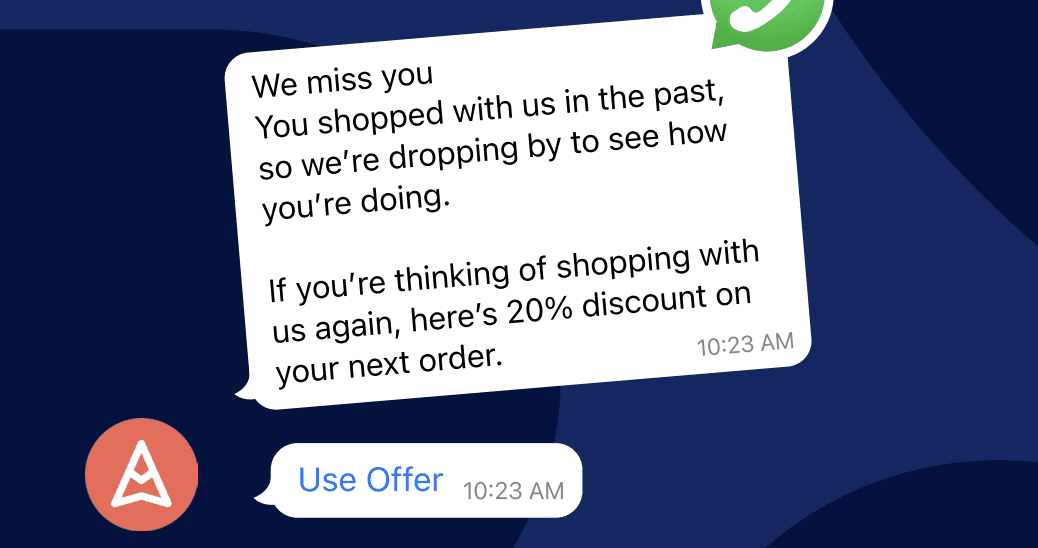Five key ways to use WhatsApp in marketing

In fact in almost every country in the World, with the key exception being China, which favours WeChat, WhatsApp is the de facto lead messaging platform. So not surprisingly it has started to become a popular marketing channel. Meta/Facebook introduced WhatsApp Business in 2017 and since then more and more brands have begun to realise the platform’s potential for building ever closer relationships with their customers.
The stat that really excites marketers is that the channel has an average open rate of 98%. Compare that with 21% for email! If a person signs up to receive WhatsApp Business messages they are likely to be passionate about a brand. So WhatsApp is where marketers can engage with core influencers, champions and hardcore fans.
One of the other key advantages of WhatsApp for brands is that its conversational nature makes it ideal for one-to-one communications – discourse feels more natural and flows better.
WhatsApp isn’t solely about words either. Using WhatsApp, marketers can send rich and interactive messages that their customers can access without leaving the app. They can click on a quick-reply, browse through product catalogues, click play on a video, track their parcel location and a whole lot more.

It is fairly early days for WhatsApp Business and Facebook/Meta has been cautious about ensuring that the roll out of the service is handled sympathetically. Consequently there is still a degree of confusion as to what the platform can be used for. So to get marketers started here are five ways brands can harness the unique nature of the channel.
Nurture subscribers
In many ways the hardest element of using WhatsApp for brands is getting customers to sign up in the first place. Brands can do this via a number of ways from communications through other channels to a ‘click here to subscribe’ button on a website.
Once they have chosen to receive messages marketers can begin the process of turning subscribers into customers by sending messages designed to encourage them to make their first purchase. These might start by being educational about the brand and then later be more explicit in unveiling special deals and offers.
What is essential is that the offers are channels-specific. Companies need to nurture that relationship by making the WhatsApp recipients feel that they are special and have an exclusive personalised line of communication to the brand.
Marketers should also be aware of their customers’ preferences too. This direct line should never be abused and, apart from the product and tracking information which we highlight later in the article, communication is best kept to a regular weekly or monthly update.
Bring customers back into the sales funnel
One of the most annoying moments for sales teams is seeing that customers have visited a website, and even placed an item in a basket, yet not actually proceeded with a purchase.
WhatsApp can play a crucial role here in re-igniting the customer’s interest in that aborted sale. Brands can send reminders or incentives to help get their customers over the line and make the purchase. When sent a few hours after the cart abandonment these personalised messages can often be the catalyst that leads to the conclusion of the transaction
Another important use for WhatsApp in the sales process is to reactivate dormant customers that have not made a purchase within a specific period of time with a thoughtful winback message and an offer. This can be highly effective in reminding customers to repeat purchases of the goods and services they buy on a regular basis.
In recent years supply chain issues have meant that it is not uncommon for companies to run out of stock. WhatsApp is also a useful way of alerting customers that the product that they were seeking to buy is available again.
Keep customers informed with shipping information
Today’s customers expect to be kept up to date as to the status of their order. Brands can use WhatsApp to keep them in the loop by sending order confirmations alerting to a package’s delivery status and notifying them when the item is most likely to be delivered.
By proactively keeping the customer informed there is less chance of customers badgering support teams with incoming inquiries, thereby freeing up their time and resources. Messages should always include an option for customers to talk with a human if they need urgent help.
Increase engagement and ROI after the purchase
Delivering post-purchase information is another very important use of WhatsApp for brands. It helps to cement the relationship between the company and the customer by showing the latter that the brand’s commitment to them does not end when the goods are delivered.
Brands can use WhatsApp messages to educate customers on how to get the most out of their purchases, by including links to tutorials or featuring step by step images in the message.
Brands can also drive more revenue after a sale by recommending products that are complementary to the one that has just been purchased. Including discount codes, bundles, or free gifts in the message.
Other ways of increasing engagement can be via special messages for a customer’s birthday, or by encouraging them to leave reviews and feedback.
Leverage customer experience teams to recommend products and increase sales
One last way that brand can use WhatsApp is sending rich media messages from the support team to drive revenue. Users can click on a quick-reply button to claim a promotion, check out a product range, view product recommendations and more.